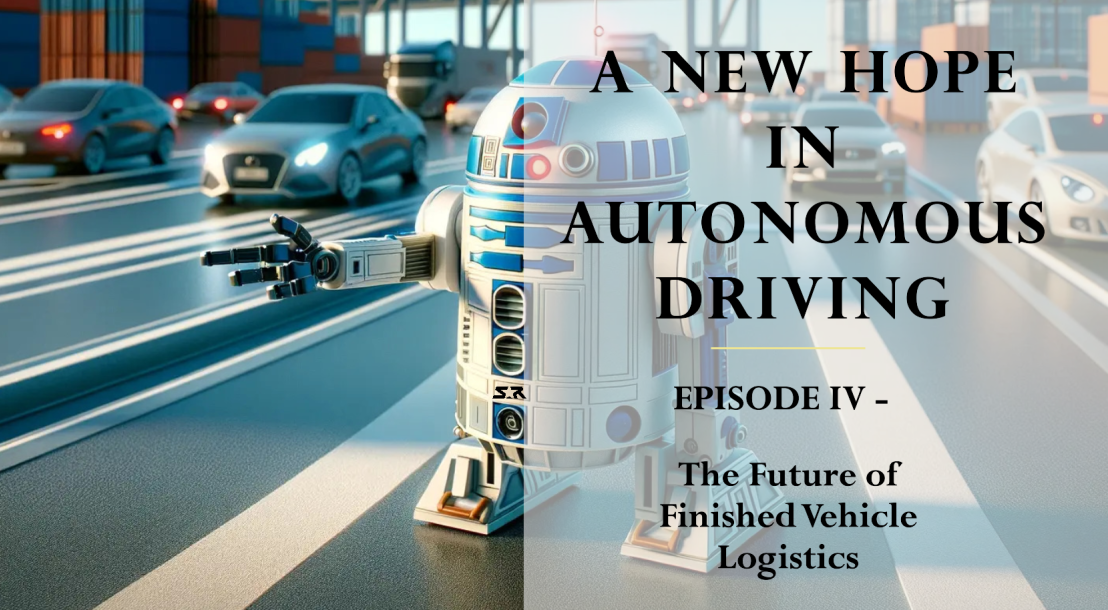Stanley Robotics: A New Hope in Autonomous Driving

Is anyone still expecting streets full of self-driving cars? They were coming up, right? Tomorrow. Next year. Well, pretty soon. Repeated postponements of a fabulous future being driven around by robots have become a bit of a joke in the industry. “Dude, where’s my car”? asks Andrew J. Hawkins in a brilliant piece in The Verge, where he takes stock of an economic landscape “positively littered with missed deadlines”.
Prominent leaders of the industry have been selling us driverless cars for 2017, 2019, 2020, while, as of 2024, self-driving cars are still not taking off beyond the borders of perfectly controlled environments, due to a series of “edge cases” [unexpected events creating unsafe condition] that are playing with the developers’ nerves and delaying each big project. It would be fun to watch, if it weren’t for the hundreds of billions of dollars invested in vain.
And it’s not just about safety. We’ve been saying it for years: the economic model is not there either. Riding a mile in an autonomous vehicle is still way more expensive than riding a mile in a cab or a ride-share such as Uber. Driver-less cars are so over-equipped with communication and sensors that they are tremendously expensive ; and that’s not even counting the operating cost, to manage the car from a distance. That’s a lot of money spent on a private vehicle that is parked 95 % of the time. So, shall we give it all up and get back to our good old steering wheels? Not necessarily.
Marshaling systems are right in keeping the eyes, ears and brains out of individual cars…
In some very specific cases, driver-less solutions do work, and they do make economic sense: for instance, in closed logistics environments, where “edge cases” are kept under control; and in sectors where truck drivers are logistics workers are scarce. At last, a consensus is emerging with what we have been claiming for years: driver-less solutions are an excellent solution in the closed environment of logistics ‒ particularly if you don’t have to equip each individual car with a complete set of autonomous sensors.
We are currently witnessing the emergence of vehicle marshaling devices, with infrabase perception and control. In the port of Emden, in Germany, the University of Bremen and industrial partners are testing a vehicle marshalling system that is built within the port infrastructure and communicates with each car via the public 5G network. Such a system requires each car to be equipped with communication devices. That’s ok, since communication systems are not the expensive part of a driver-less vehicle.
What’s expensive are the eyes and ears, the whole system of GPS sensors, HD cameras, laser or Lidar rangefinders, radars, etc, and the decision-making system: once all this information is collected, you need a brain, a focal point that will collect all this information and make decisions on how best to move the vehicles according to a goal. Marshaling devices start from the smart assumption that it’s best to share the costs of the eyes and ears, and of the decision-making, across all cars.
… But robots are so much more flexible
So, are we going to change Stanley Robotics’ business model to run with this new vibe? No thanks. We’ve always promoted sensor-sharing, the whole idea that it’s best to keep eyes, ears and brains out of a car that’s parked 95% of the time, and to focus our time and money on the constant improvement of the “brain” and “nerve system”. We’re keeping the brain out of the car, and plugging it onto it for the short time it’s needed.
Yes, we’re going with sensor-sharing - we’ve been with it from the start, but we remain convinced that it’s best to keep it mobile, so it can go and help individual cars wherever it’s needed instead of being stuck within a specific infrastructure. This is how we came up with Stan, the robot that lends its brain to cars (have you met Stan?)
For the moment, Stan lifts and moves car physically. Our vision for the future is to have robots that can connect virtually to each car, through 5G networks or other communication systems. This is a safe bet to make, as most newly manufactured cars already come out of the factory with a communication system and basic automation. Our new robots will be able to connect to cars and move them just by telling them where to go, with the added flexibility of being able to change location from one storage environment to the other, according to needs. They will be able to tackle much bigger areas than the logistics compounds and factories we currently work in: large harbors or industrial zones, car transportation ships, trains, etc. Until the day comes when they can safely control cars on the open road. But as said above, there is still much work to do in this area to make such a project reasonable for the time being.
Our long-term vision is consistent with a vehicle droid. With all our down-to-earth industrial sense, we are still convinced that R2D2 from Star Wars is an exciting model: that of a robot with on-board intelligence, that can share its eyes, ears, and decision-making skills with a “dumb machine” whenever it is needed: car logistics… or interstellar journeys. Automated vehicle marshaling is a great idea, as it proves our point that eyes, ears and brains are best kept where they are constantly in use. But we find our robots so much more flexible. Aren’t they, Stan? Good boy.
About Stanley Robotics 
Stanley Robotics is a deep tech company that combines hardware and software to provide solutions for outdoor logistics. The technology lies in a robot lifting and moving cars autonomously and in an intelligent storage management software. Robotics has transformed indoor logistics (e.g. in warehouses), resulting in a spectacular increase of productivity. Stanley Robotics’ ambition is to bring this transformation to outdoor logistics with its proprietary technologies. Founded in 2015, the SME is headquartered in Paris, France, and is also behind the world's first outdoor robotic valet parking service.




Comments
There are no comments yet for this item
Join the discussion